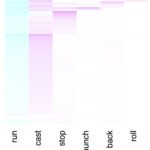Lien vers Pubmed [PMID] – 27720450
Lien DOI – S0092-8674(16)31242-910.1016/j.cell.2016.09.009
Cell 2016 Oct; 167(3): 858-870.e19
Even a simple sensory stimulus can elicit distinct innate behaviors and sequences. During sensorimotor decisions, competitive interactions among neurons that promote distinct behaviors must ensure the selection and maintenance of one behavior, while suppressing others. The circuit implementation of these competitive interactions is still an open question. By combining comprehensive electron microscopy reconstruction of inhibitory interneuron networks, modeling, electrophysiology, and behavioral studies, we determined the circuit mechanisms that contribute to the Drosophila larval sensorimotor decision to startle, explore, or perform a sequence of the two in response to a mechanosensory stimulus. Together, these studies reveal that, early in sensory processing, (1) reciprocally connected feedforward inhibitory interneurons implement behavioral choice, (2) local feedback disinhibition provides positive feedback that consolidates and maintains the chosen behavior, and (3) lateral disinhibition promotes sequence transitions. The combination of these interconnected circuit motifs can implement both behavior selection and the serial organization of behaviors into a sequence.


